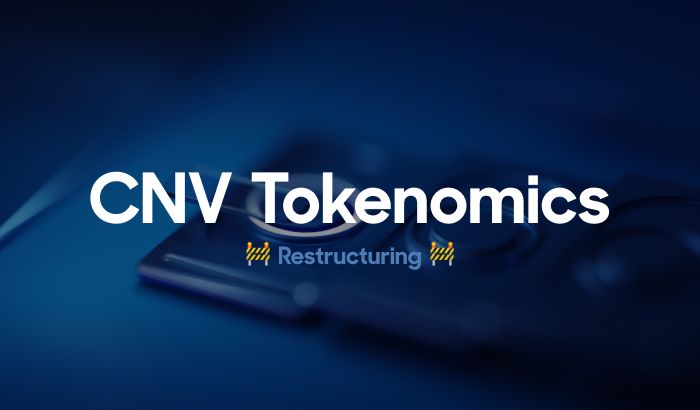CNV Tokenomics Restructuring
Deprecation of pCNV
The team hereby introduces a finalized structure with respect to pCNV, with minor changes aimed at providing additional clarity and structure. However, firstly, the organization wishes to express some of the reasonings for why pCNV is being chosen to be deprecated via conversion:
- The implied present and future value of the token in forward return terms is dampened due to the design of the token itself, thus providing little incentive for current and future contributors to unlock the full privileges afforded by the warrant-like provisions embedded
- By removing pCNV, a better structure for incentivizing current and future contributors is pursuable - a topic that will be explored in the second part of tokenomics adjustments
The proposed flow for the dissolution of pCNV and the current privileges it affords are introduced:
- Burn all pCNV not issued to the market (inclusive of pCNV unissued to newer contributors)
- Forward mint 10% additional CNV supply to a redeem contract, with respect to circulating pCNV only; the CNV to mint is calculated as pCNV_MarketOwned / 33,330,000 * (CNV_Supply * 10%)
- Create a snapshot of pCNV holders
- Calculate the CNV issuable, per wallet address, according to the snapshot and subject to the following equation: pCNV_Owned / 33,330,000 * CNV_Minted
- Publish, after internal audit, the list of qualifying wallets and CNV redeemable in the conversion process as a spreadsheet
- Authorize pCNV holders to redeem for CNV via contract created from Step 2, subject to the calculations in Step 2 and 4, with no duration attached to the claim; during this step, announce conversion is live and include CNV minted from the operation (as calculated in Step 4)
- Remove, or otherwise edit, documentation regarding pCNV to provide clarity to the market that the token is discontinued
- Issue summary of execution via announcement
A few additional comments are made with respect to the current plan:
- The viability of auto-converting pCNV to lsdCNV positions was explored and ultimately discarded due to the implied gas costs associated
- Given a CNV supply of approximately 1,000,000, the CNV that would need to be minted for the purpose of conversion stands at around ~35,000 due to the fact that most pCNV sits unissued in the treasury wallet; the conversion is being treated this way to “properly” simulate conversion as if all pCNV was issued to the market at terminal supply and no additional pCNV was earned by existing pCNV holders
- This directive makes no special accommodative considerations for NFT holders or, more broadly, pCNV holders with “tiny” amounts; the team is aware that many users are unlikely to claim solely due to the gas cost considerations - a similar reality observed in the case of standard quarterly airdrops
- Any pCNV previously redeemed assumes no conversion privileges
The conversion from pCNV to CNV is slated to be available from 1 June.
Miscellaneous Notes
- Do lsdCNV holders need to relock at the end of the locking period to continue receiving rewards?
- No, there is no need to relock, you can leave it staked. Once the end of term arrives, a stakeholder may opt to keep the position, sell it on the NFT marketplace or hold for future airdrops/claims. Do note that only lsdCNV (not base CNV) is privy to receive these.




